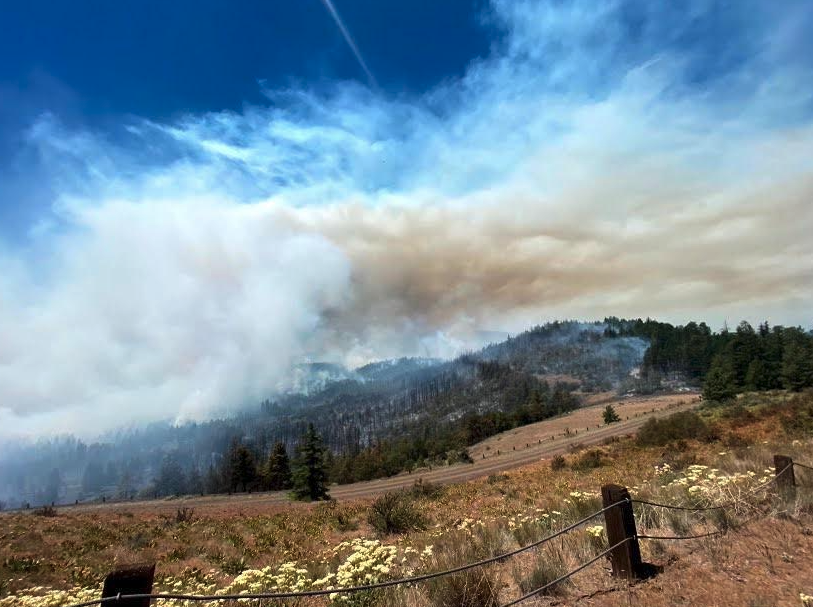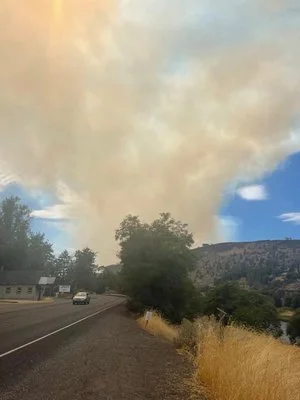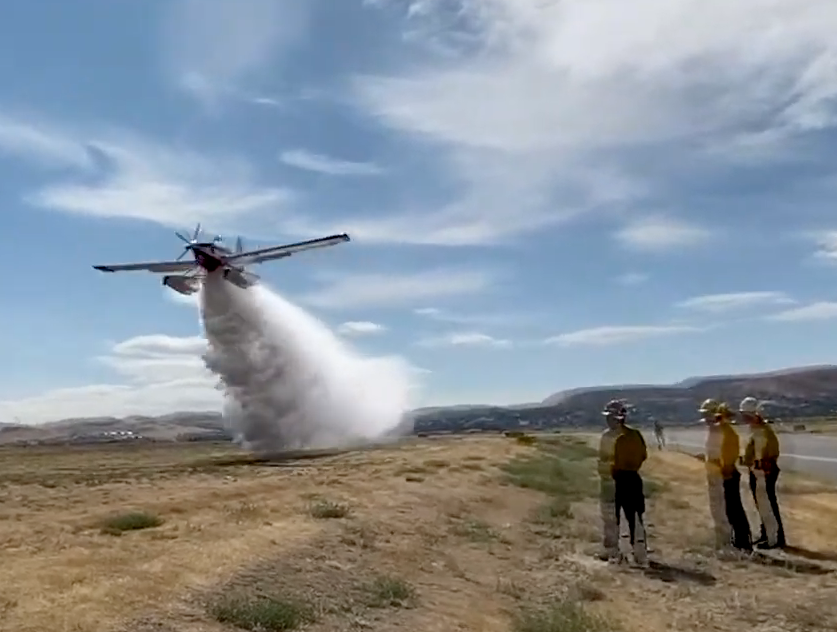USDA drops $6 million into fire defense funds for Wasco County
Photo from Javin Dimmick with Northwest Incident Management Team 8
From the United States Department of Ag:
The Miller Road Fire near Tygh Valley and Maupin burned more than 10,000 acres in 2022, destroying property and upending people living in rural areas impacted by the blaze. The USDA has just announced $6 million in funding to help prevent blazes such as these in Wasco County.
YAKIMA, Wash., May 14, 2024 — Deputy Secretary of Agriculture Xochitl Torres Small announced $250 million to help at-risk communities protect their homes, businesses and infrastructure from catastrophic wildfire, made worse by the climate crisis, as part of President Biden’s Investing in America agenda.
Wasco County is receiving nearly $6 million to create fuel breaks and defensible space to protect Maupin, Pine Grove, Tygh Valley and other communities.
Made possible by President Biden’s Bipartisan Infrastructure Law, today’s announcement through the Community Wildfire Defense Grant program will fund 158 projects to help communities in 31 States, two Territories and 11 Tribes develop community wildfire protection plans and remove overgrown vegetation that can fuel fires that threaten lives, livelihoods, and resources. The Community Wildfire Defense Grant program is based on legislation initially introduced by Vice President Harris in the U.S. Senate.
"The Biden-Harris administration is putting historic resources into efforts to confront the wildfire crisis, which is threatening people, communities and resources across the nation,” said Deputy Agriculture Secretary Xochitl Torres Small. “The Community Wildfire Defense Grants are just one of many ways we are helping communities adapt to larger, more complex and more frequent wildfires.”
“Last year, over two million Americans across the country were displaced by extreme weather and climate-fueled disasters, including wildfires,” said Assistant to the President and National Climate Advisor Ali Zaidi. “Under President Biden, we are making the largest-ever investment to tackle the climate crisis, while reducing the risks of catastrophic fires and making communities safer, stronger, and more resilient.”
Now in its second year, the Community Wildfire Defense Grant program helps communities in the wildland-urban interface maintain resilient landscapes, create fire-adapted communities, and ensure safe, effective wildfire response -- all goals of the unifying National Cohesive Wildland Fire Management Strategy and aligned with the objectives of the National Climate Resilience Framework.
Examples include nearly $10 million for the Cherokee Nation in Oklahoma to get the equipment they need to reduce wildfire risk through prescribed fire, thinning, and to educate and train firefighters and the communities they serve. Wasco County in Oregon is receiving nearly $6 million to create fuel breaks and defensible space to protect Maupin, Pine Grove, Tygh Valley and other communities. In Colorado, The Nature Conservancy will use nearly $9.9 million to protect communities in Archuleta County and watersheds that provide irrigation and drinking water to downstream users in Santa Fe and Albuquerque, New Mexico, which get 50% and 90% of their clean water from these watersheds, respectively.
Interest in the program has also grown since its first year, with more projects being funded in more states and among more Tribes, thanks to an increase in applications, representing a nearly 20% increase in funding overall.
In total, the program is investing $1 billion over five years to assist at-risk communities through grants to local and Tribal communities, non-profit organizations, state forestry agencies, and Alaska Native Corporations, with planning for and mitigating wildfire risks on lands not managed by federal agencies.
The USDA’s Forest Service collaborated with Tribes and States through an interagency working group to develop the Community Wildfire Defense Grant program. Grant proposals undergo a competitive selection process that includes review panels made up of State forestry agencies, Tribal representatives, and other organizations. The proposals are reviewed using guidelines within the Bipartisan Infrastructure Law, which prioritize at-risk communities that have been impacted by a severe disaster, are at a high or very high potential for wildfire hazard, and are classified as low income.
“We recognize the difference this program is already having on reducing wildfire risk. This second round of investments will help communities develop community wildfire protection plans, which serve as roadmaps for addressing local wildfire risks,” said Forest Service Chief Randy Moore. “They also will fund projects to lower wildfire risk on non-federal land in communities that already have a community wildfire protection plan in place.”
The Forest Service will announce a third funding opportunity later this year.
Along with establishing the Community Wildfire Defense Grant Program, President Biden’s Bipartisan Infrastructure Law provides an historic $3.5 billion investment in wildfire management through a suite of programs aimed at reducing wildfire risks, detecting wildfires, instituting firefighter workforce reforms, and increasing pay for federal wildland firefighters. Together, the President’s Bipartisan Infrastructure Law and Inflation Reduction Act invest more than $50 billion in climate resilience and adaptation.
The May 14 announcement comes on the heels of President Biden’s fiscal year 2025 budget proposal, which proposes $2.7 billion for Forest Service’s base wildland fire management program, investing in firefighter compensation, benefits, mental health and well-being, and supporting the objectives of the agency’s 10-year Wildfire Crisis Strategy.
The proposal includes $216 million for a comprehensive pay increase for the wildland firefighter workforce to improve recruitment and retention and $136 million for larger, and more full-time firefighters to meet the increasing demands of the year-round wildfire season. In addition, $10 million is proposed for mental health and wellbeing assistance to firefighters with another $25 million proposed to address the urgent need for suitable employee housing.
More information about the funded proposals, as well as announcements about the grant program, is available on the Community Wildfire Defense Grants website.
Support Local Fire News
Available to everyone. Funded by readers.



